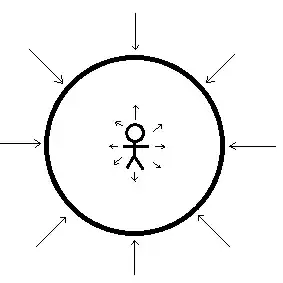Imagine a supermassive hollow shell in space, and also imagine there is an object at the center of this shell. How does the force of gravity affect the body inside the shell?
My reasoning is that the shell will pull outward on the body equally in all directions. Now do the forces cancel out essentially doing nothing to the body or will the forces act to pull the body apart? The essence of my question is whether or not two opposing gravitational forces cancel eachother or if they act together to "rip apart" something.
As an analogy, if I pull equally hard on two sides of a rope the rope would experience two equal and opposite forces but would still get ripped apart if I pull hard enough. Does gravity act in the same manner?
Here's a crudely drawn diagram of the setup:

The object at the center is not necessarily a human, consider a small non-massless particle.